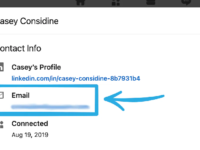Key Factors That Determine the Processing Of an EDI Invoice

The procedure of dispatching and receiving business invoices using electronic data interchange is known as EDI billing. Electronic data interchange refers to the exchange of critical information and documents in a standardized format between companies using computers.The individual companies using this software platform to conduct their commercial activities are known as trading partners. They agree to use a common standard such as ANSI X12when interchanging vital business documents to avoid confusion. This standard assigns a code EDI 810 to all invoices the company’s process when conducting their daily operations.
What kind of information does an EDI invoice contain?
An invoice is a document that companies send to their customers requesting payments for the delivery of products to them. They prepare and dispatch this invoice after fulfilling the customers’ purchase orders. EDI 810 is essentially the electronic form of a paper invoice that companies issue under the manual system. They generate it in response to a purchase order in the form of EDI 850 from their trading partners. It generally contains the following information:
- An invoice number,
- Date of the transaction,
- The purchase order number against the company that is issuing the document,
- Specifications and quantities of the products sold to the trading partners,
- Shipping details,
- Per unit cost of each product,
- Taxes, allowances and other charges applicable to the sales transaction,
- Discounts which companies offer to their trading partners, and
- The total value of the transaction.
What are the steps involved in EDI billing?
The generation of an EDI invoice via code EDI 810 on receiving a purchase order in the form of EDI 850 involves the following steps:
- The companies receive a purchase order via EDI 850 from their trading partners who request the delivery of certain products,
- The electronic data interchange platform processes this purchase and sends the details to the enterprise resource planning (ERP) system,
- The companies ship the relevant products to the trading partners and generate an ERP invoice,
- The EDI platform scans and processes the ERP invoice to generate a billing transaction number, and
- The EDI platform generates an invoice based on the transaction number and sends it to the trading partners.
Advantages
The advantages of generating and sending invoices using an electronic data interchange (EDI) platform are as follows:
- Boost internal efficiency as companies hardly spend any time in preparing the invoices,
- Significantly reduces the occurrence of inadvertent human errors common in manual processing,
- Companies can instantly reconcile invoices against purchase orders to detect any discrepancies, and
- Companies can expect faster payments on invoices they issue to their trading partners.
Read more: Basics of Data Visualization
Companies that generate an EDI invoice against their trading partners’ purchase orders can expect significant improvements in the company’s internal efficiency. In the process, they do not have to worry about human errors, which are common in manual systems. Even if the companies suspect any discrepancies, they can instantly reconcile invoices against their trading partners’ purchase orders. Above all, they can expect faster payments against the invoices compared to the manual system with success.






